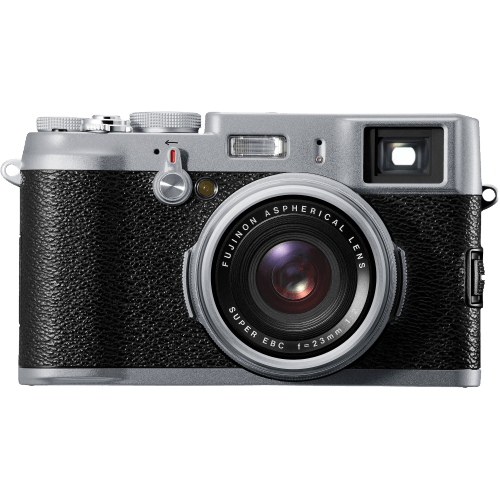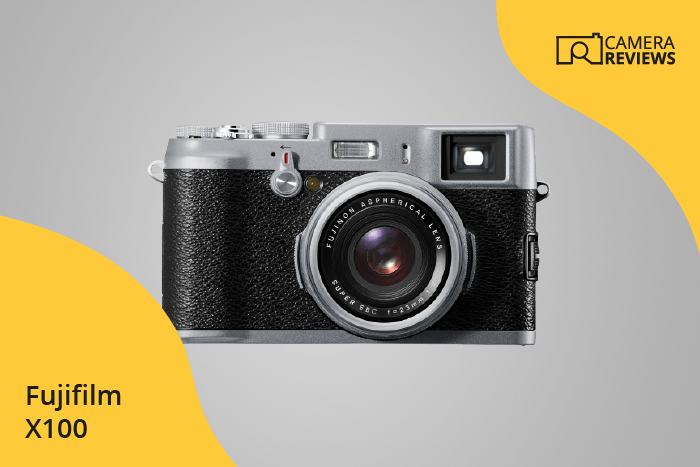Fujifilm FinePix X100 Specs and Scores

The Fujifilm FinePix X100 scores 42 out of 100 in our evaluation, which reflects its general specifications. Announced on September 19, 2010, and launched at a price of $999, this compact camera measures 126 x 75 x 54mm and weighs 445g or 0.98lbs. Although the X100 has been on the market for over a decade, its specifications remain relevant for certain photography enthusiasts. However, it may not be the best choice for those seeking the latest technology in a compact camera.
Fujifilm FinePix X100 Overview and Optics
The Fujifilm FinePix X100 received a score of 48/100 for its optics. With 12.3 megapixels, a shooting speed of 5, and a CMOS sensor, the X100 offers decent performance. The camera utilizes an EXR processor and has an APS-C sensor size, ensuring good image quality. However, it does not feature image stabilization and has a fixed lens mount, limiting its versatility.
In the current market, the X100’s 12.3-megapixel resolution is relatively low, as newer cameras offer higher resolutions. Additionally, the lack of image stabilization may result in blurry images when shooting handheld. The fixed lens mount could be a drawback for those who prefer interchangeable lenses, but it simplifies the camera and reduces bulk.
Despite these limitations, the Fujifilm FinePix X100 is a solid choice for photographers who appreciate its simplicity and compact design. Its performance may not match the latest camera models, but it still delivers quality images for various situations.
Fujifilm FinePix X100 Video Performance
The Fujifilm FinePix X100 receives a video score of 34 out of 100. This camera offers a maximum video resolution of standard HD at 1280 x 720 dimensions. The maximum video frame rate is 24fps, which is lower than many modern cameras that offer 30fps or even 60fps. Unfortunately, the X100 does not have built-in time-lapse functionality.
Comparing the X100’s video capabilities to other cameras in today’s market, it falls short in terms of resolution and frame rate. Most current cameras provide Full HD (1080p) or even 4K video resolution, which deliver sharper and more detailed footage. The lack of time-lapse functionality is also a drawback for those who enjoy capturing creative videos.
The Fujifilm FinePix X100’s video features are limited and do not compete effectively with many contemporary cameras. For users primarily interested in photography, this camera might suffice, but those who value video capabilities should consider other options.
Fujifilm FinePix X100 Features and Benefits
The Fujifilm FinePix X100 has a feature score of 34 out of 100. This score reflects the camera’s specifications, which include a 2.8-inch screen with a resolution of 460,000 dots. However, the X100 does not have a touchscreen, flip screen, GPS, Wi-Fi, or Bluetooth capabilities.
In comparison to other cameras on the market, the X100’s features may seem outdated or limited. The lack of a touchscreen and flip screen can hinder user experience, while the absence of GPS, Wi-Fi, and Bluetooth restricts the camera’s connectivity options.
Despite these limitations, the Fujifilm FinePix X100 still has a dedicated fan base who appreciate its design and image quality. While it may not be the best choice for those seeking advanced features, it remains a viable option for photographers who value simplicity and a classic aesthetic.
Fujifilm FinePix X100 Storage and Battery
The Fujifilm FinePix X100’s storage and battery score is 16/100. This lower score reflects the camera’s limited storage options and battery life. The camera has only one memory card slot, accepting SD, SDHC, and SDXC cards. In today’s market, multiple card slots are more common, offering users flexibility and increased storage capacity.
The battery life of the FinePix X100 is 300 shots, powered by an NP-95 battery. This battery life is relatively short compared to other cameras on the market. Furthermore, the camera lacks USB charging capabilities, which could be inconvenient for users who need to recharge on the go.
Considering these specifications, the FinePix X100’s storage and battery capabilities are not as competitive as other cameras in today’s market.
Fujifilm FinePix X100 Alternatives
Do you want to know how the Fujifilm FinePix X100 compares to its competitors? Have a look at the most popular comparisons for this camera below:
- Fujifilm FinePix X100 vs X100V
- Canon EOS R7 vs Fujifilm FinePix X100
- Fujifilm FinePix X100 vs X-T30
- Canon PowerShot G3 X vs Fujifilm FinePix X100
- Fujifilm X100F vs FinePix X100
- Fujifilm FinePix S5 Pro vs FinePix X100
Fujifilm FinePix X100 FAQ
Does the Fujifilm FinePix X100 Have Built-in Image Stabilization?
Unfortunately, the Fujifilm FinePix X100 does not have built-in image stabilization. Users may need to use a tripod or practice steady hand techniques for sharper images.
Does the Fujifilm FinePix X100 Support 4K Video Recording?
No, the Fujifilm FinePix X100 does not support 4K video recording. Its maximum video resolution is Standard HD (1280×720 pixels), which is still suitable for casual video recording.
What Size Sensor Does The Fujifilm FinePix X100 Have?
The Fujifilm FinePix X100 features an APS-C sensor, which is larger than the sensors found in most compact cameras. This allows for better image quality and low-light performance.
Does the Fujifilm FinePix X100 Have a Dual Memory Card Slot?
No, the Fujifilm FinePix X100 has a single memory card slot, which supports SD, SDHC, and SDXC cards. Users will need to manage storage accordingly.
Does the Fujifilm FinePix X100 Have a Touch Screen?
The Fujifilm FinePix X100 does not have a touch screen. Users will need to navigate the camera’s settings and functions using physical buttons and dials.
Does the Fujifilm FinePix X100 Have Wi-Fi and Bluetooth?
Unfortunately, the Fujifilm FinePix X100 does not have Wi-Fi or Bluetooth connectivity. Users will need to transfer images and videos using a memory card reader or a USB cable.
Does the Fujifilm FinePix X100 Have GPS?
No, the Fujifilm FinePix X100 does not have built-in GPS functionality. Users will need to rely on alternative methods for geotagging their images.
Is the Fujifilm FinePix X100 Weather Sealed?
The Fujifilm FinePix X100 is not weather-sealed, which means it may not be suitable for use in heavy rain or dusty environments. Extra care should be taken to protect the camera in such situations.
Does the Fujifilm FinePix X100 Have a Built-in Flash?
Yes, the Fujifilm FinePix X100 comes with a built-in flash, which can be useful for providing additional light in low-light situations or for fill-flash purposes.

